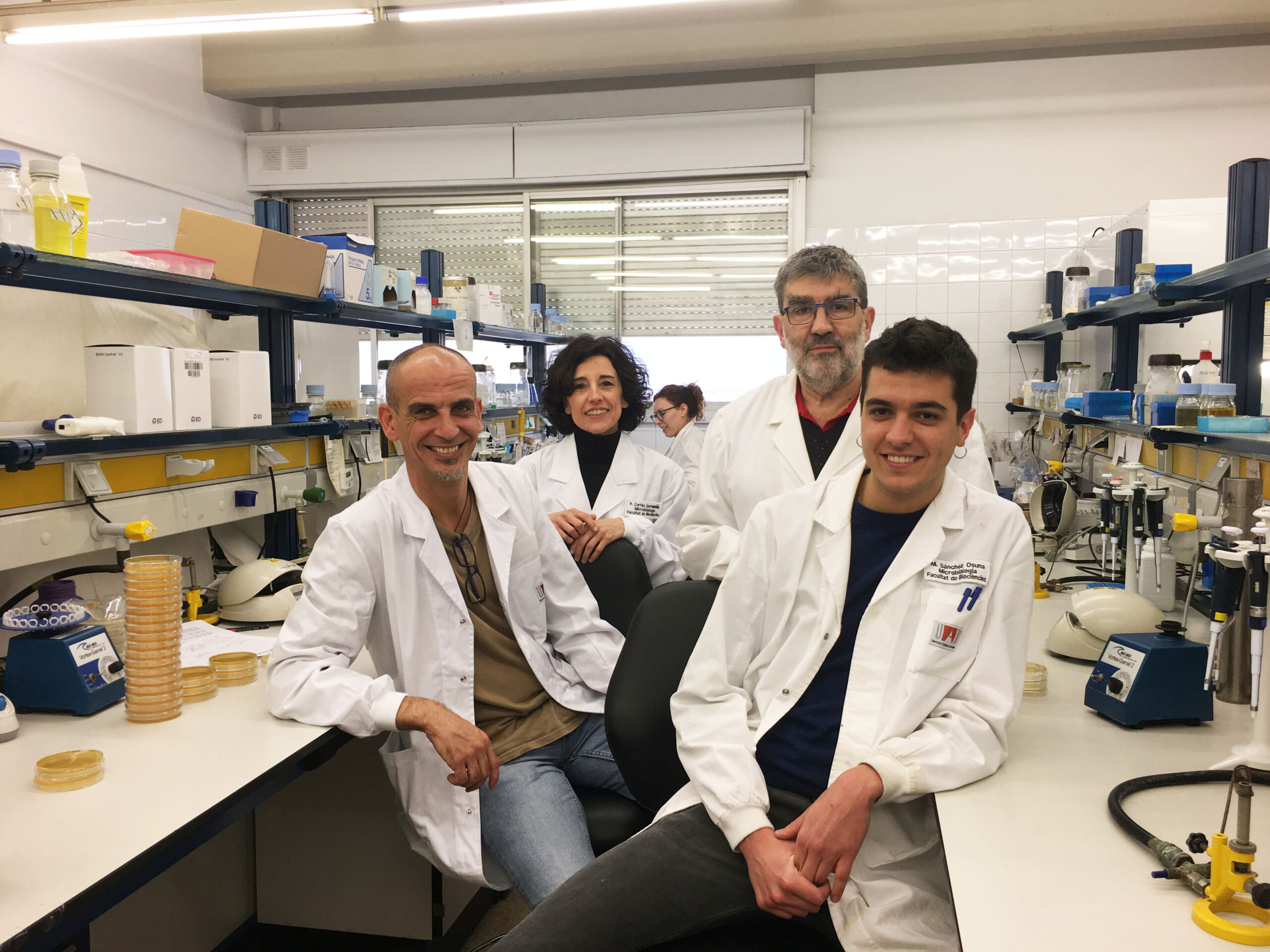“The drug you design ten years from now may already be obsolete,” Ivan Erill says. In a new study in Frontiers in Microbiology, Erill and colleagues describe how bacteria that existed hundreds of millions of years ago were already resistant to an antibacterial drug not invented until the 1930s. Once farmers began using the new class of drugs in agriculture, resistance spread quickly. As the bacteria were exposed to the drugs on a large scale in soils and waterways, antibiotic-resistant strains began appearing in hospitals within a decade.
How is this all possible? Antibiotic resistance has much deeper roots than most people realize, Erill explains. Many antibiotics used to treat bacterial infections today are based on molecules bacteria naturally produce to out-compete their neighbors. “Your competitors are not just going to stand by,” says Erill, professor of biological sciences, “so over millions of years they are going to develop resistance. That’s a given.”
But the drugs featured in this research are not natural antibiotics. They are synthetic compounds produced by humans. “With synthetic drugs, that’s a different picture altogether,” Erill says. “It’s not a given that you would find resistance.” That’s why the research team was surprised when they did—hundreds of millions of years before the drugs were invented.
Tracking down the source
The synthetic antibacterial drugs in question, called sulfonamides, target an enzyme involved in a pathway necessary for DNA synthesis. If an organism can’t replicate its DNA, it can’t reproduce, so its population quickly dwindles to nothing. The bacteria that are resistant to sulfonamides have modified genes for the target enzyme, called sul genes (for sulfonamide resistance). These genes allow the bacteria to continue reproducing in the presence of the drug, which means the antibiotic won’t work on them.
Most sulfonamide-resistant bacteria have sul genes in what are called mobile elements—small segments of DNA that can easily jump from one individual or species to another. Erill and colleagues used computational tools to figure out which bacteria species had sulfonamide-resistance genes in their chromosomes instead of in mobile elements, indicating that they were the original sources of the resistance. They showed that two groups of bacteria harbor chromosomal sul-like genes.

“You can use algorithms to reconstruct the most likely evolutionary history that explains the development of sulfonamide resistance,” Erill says. Those algorithms allowed the researchers to confirm that the resistance existed 500 to 600 million years ago. To further verify their results, the researchers inserted copies of the chromosomal sul-like genes into bacterial cells in the lab. When exposed to sulfonamides, the cells grew just fine, confirming that the genes confer resistance.
Pure chance
The question remains, though: “How can you explain that bacteria 500 million years ago were resistant to a substance that didn’t yet exist?” asks Erill. While there is an small chance some organism was producing a sulfonamide-like compound hundreds of millions of years ago and resistance evolved in response to that pressure, Erill and his team put forth a different argument.
“There is an enormous amount of bacterial genetic diversity,” Erill says. Miquel Sanchez, a Ph.D. student at the Universitat Autònoma de Barcelona and the first author on the paper, adds, “Resistant variants of the antibacterial target could be present in the global genetic pool even before microbes are exposed to them.”
So, the reason these two bacterial groups were resistant to a compound that had never existed? Erill says, “We argue that this is just pure chance.”
Rogue bacteria
This research has big implications for the development and use of future antibiotics. If scientists develop a new antibiotic, “it is well possible that there might be one bacterium in the world that is already resistant,” Erill says. With conservative use of the antibiotic in human patients, though, it’s unlikely that particular bacterium would ever be exposed to the antibiotic and spread its resistance.
But, “if you overuse the drug, especially in an agricultural setting, where the drug slowly permeates into the soil, waterways, and underground water reservoirs,” you’re exposing “this huge population of bacteria that otherwise would never be bothered by antibiotics or synthetic drugs,” Erill says. And, based on the team’s analysis, if the one bacterium that is already resistant is exposed to the drug, “this variant that is resistant will jump to other species in a matter of years.”
“For me, it’s especially a warning against using antibiotics in farm settings,” Erill says. New drugs are typically tested using disease-causing bacterial species, “but maybe that’s not enough,” he says. “Maybe you should do broader testing, especially on the non-usual suspects, like soil bacteria.”
Erill also says the new finding points toward using combination therapies more often. A bacterium in nature might harbor a chance resistance to one compound it’s never encountered, but it’s unlikely to be resistant to two. If doctors use two drugs at once, it is likely that one of the drugs will kill the bacteria, preventing it from spreading its resistance to the other drug.
These new research findings could affect how well superbugs are kept at bay and the effectiveness of new antibiotic treatments. Whether the agricultural industry and drug developers heed the team’s advice remains to be seen.
Image: From left to right, the authors of the paper: Ivan Erill, Pilar Cortés, Jordi Barbé, and Miquel Sánchez-Osuna. Photo by Ángela Martínez Mateos.

